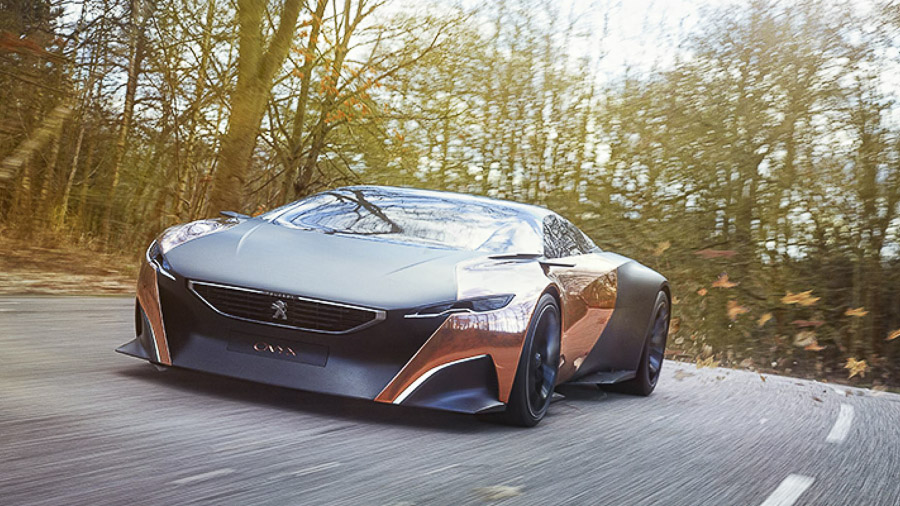
Here at Top Gear, we like to think of ourselves as being grounded in reality. Well… sort of. Reality isn’t technically a £1m Bugatti Veyron, or even something cheaper, like, say, a pocket-change £180k McLaren 12C. But this is at least all stuff you can experience, stuff you can drive. That’s what gets us going.
And it’s why we can sometimes be a bit wary of concept cars: they might look real enough, but mostly they’re just styling bucks with flight-of-fancy innards, an off-roader powered by rainwater or a supercar fuelled by horse manure… that sort of thing. But the Peugeot Onyx is not like other concept cars.
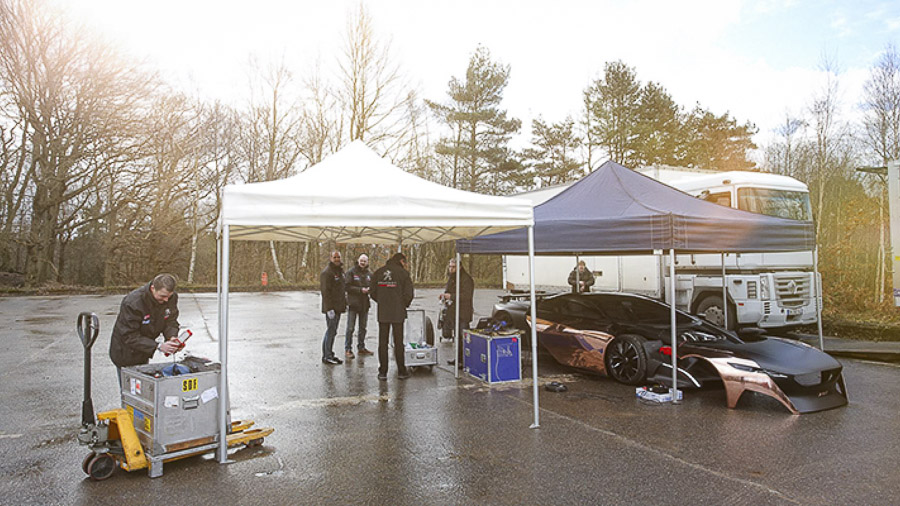
Because this is a concept car, and then some, marrying all those concept-car futuristic looks and materials with a trick up its sleeve: a real-life engine. One that actually works. More than that, it is one capable of propelling the Onyx to 160kph and beyond. The best part? Today, we get to drive it.
But first, some detail on the car. Peugeot decided the Onyx’s powerplant should be the diesel V8 from the 908 Le Mans car of 2011, which means that it has some pretty eye-watering stats. It’s a 3.7-litre diesel producing 600bhp, but, unlike the 908, there’s a hybrid element as well, adding an extra 80bhp. Unfortunately, the electric motor isn’t working today, so we’ll have to make do with just the regular engine’s 600bhp.
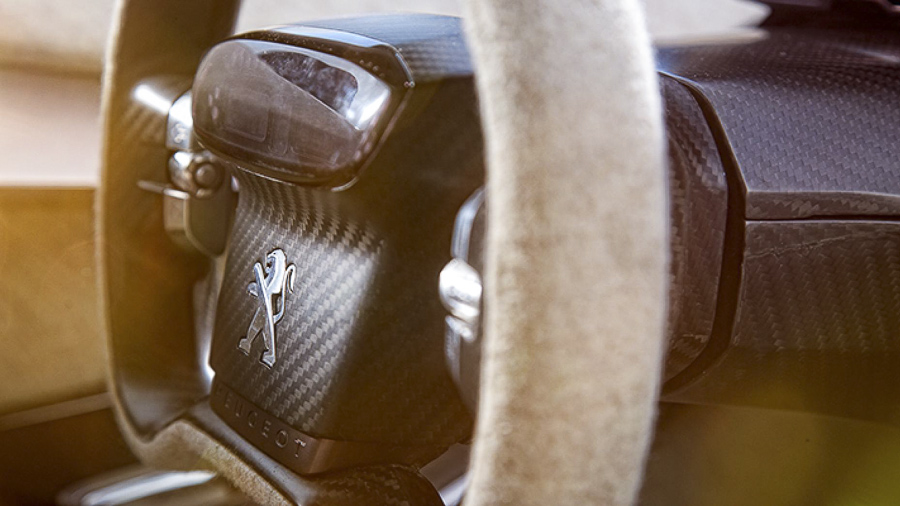
Before you get too disappointed, remember that this car only weighs 1,100kg, so the Onyx has a power-to-weight ratio of 545bhp per tonne. Which is a lot – even a car as ballistic as the Ferrari F12 can only manage 448bhp per tonne. In fact, you’ve got to be in something like the Bugatti Veyron Super Sport to beat the Peugeot’s power to weight, so the Onyx is in rarefied company.
The low kerbweight is mainly thanks to the 12-piece carbon-fibre chassis, which only weighs 100kg and helps to counteract the more unusual - and heavier - copper body panels. Incidentally, these are being left untreated, the theory being that the Onyx will ‘age’ as the copper oxidises and turns verdigris green.
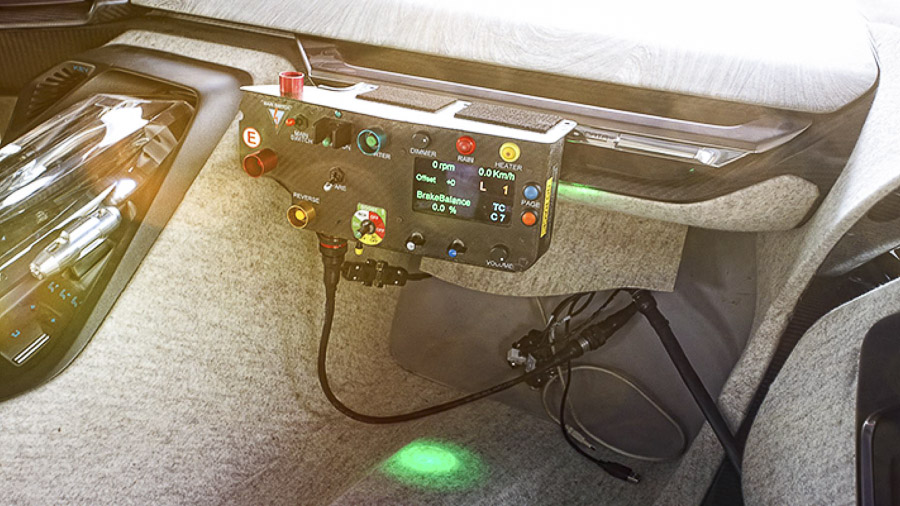
There are other weird materials on the Onyx, too. The dash is made out of squashed newspapers and appears to have a wood-like grain, but if you peer closely you can see the remnants of printed words and letters. And swathes of the interior - the seats, sections of the headlining, door panels - are made of recycled felt. It’s as surreal as you imagine pure concept nonsense to be.
So, in spite of the relatively normal diesel engine, the day begins as most concept-car shoots do. The initial impression is that the Onyx is a bit of a trailer queen, with the usual concept-car nannying. Truck rolls into scruffy-looking test track. Tailgate is opened. Mechanics swarm. Covers – a silver topcoat followed by a fleece undercoat – are removed. Wacky-looking Peugeot Onyx is revealed. Car is gingerly pushed off the lorry. Same old, same old…
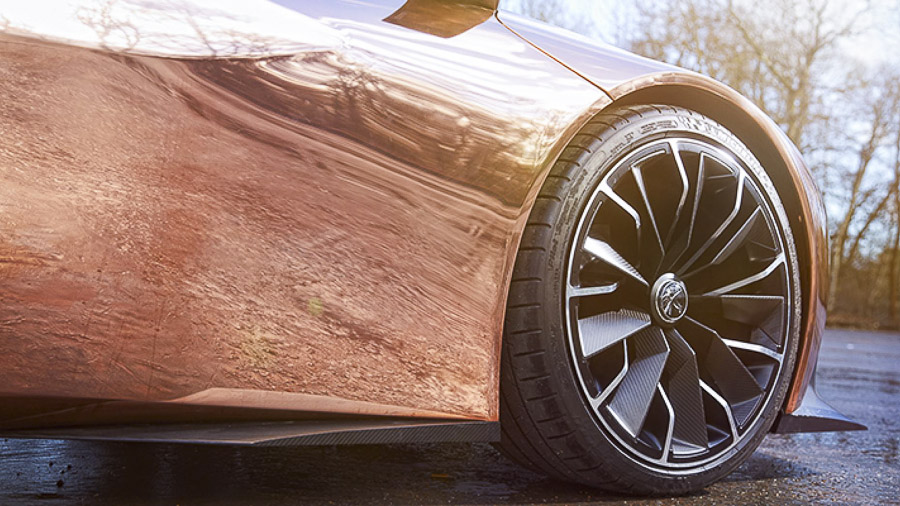
But the mechanics look very nervous and are staring at me, the Onyx’s potential pilot, with more than a hint of trepidation. I can’t blame them – it was on TGTV yesterday, and straight after we’re finished with the £1,000,000 Onyx, it’s being packed off for more testing. And then it’s heading to Geneva for the motor show, and then onto Shanghai for another motor show. In other words, if I stuff it, there will be an Onyx-sized hole on the Peugeot stand at two of the world’s biggest and most important shop windows. I smile encouragingly at everyone. Nobody looks convinced.
But before we can get into the potentially embarrassing driving stuff, the engine needs warming up. Like the 908 Le Mans car, the Onyx needs to be plugged into a generator to heat all the fluids before it can even be turned over. So the bonnet is removed, the car’s electrics are powered up, and the rear spoiler rises out of the bodywork to reveal the attachment points for the generator.
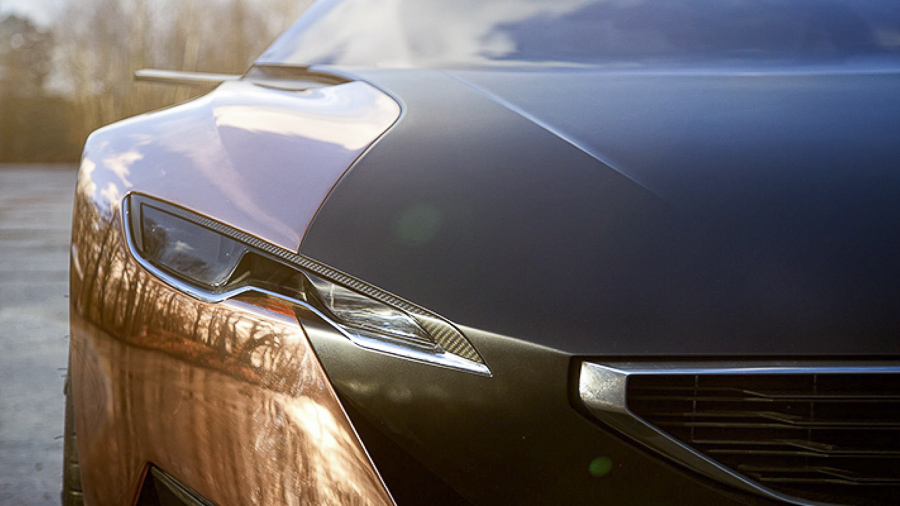
After half an hour, mechanics start to clamber into the Onyx, which means the temperatures must be about right. They also have to remove the rear wheels so that they can turn the engine and ‘box over manually. It’s all about circulating warm oils around the various metal parts. And taking the rear wheels off is simply a practical thing – it’s easier to spin the hubs than grab a tyre.
But this does at least give us a chance to peer into the business end of the Onyx and, to be honest, it all looks a bit incongruous. The inside of the rear wheel arch is plainly from a concept car because it doesn’t look finished, but all around this are normal bits like springs and dampers and brakes. Things you recognise from any ordinary family hatch. You can even see a section of exhaust poking through bodywork. A mishmash of reality and fantasy.

The wheel gun shatters my peaceful peering. The wheels are bolted back on, the bonnet is clipped back into place and I get a final briefing from the chief engineer. He’s extremely nervous and keeps reminding me that the Onyx is wider at the back than it is at the front so “Be wary on the first corner.” Unfortunately, his trepidation is infectious, and I start to worry, even though our test track today is two lanes wide pretty much everywhere.
Besides, as I slide into the surprisingly comfortable seat, there’s no way I’d ever forget I’m in something very expensive and a little bit intimidating. The steering wheel is another 908 carry-over, full of buttons and confusing-looking switches. And the view out of the windscreen is limited. In fact, the view out of anywhere is severely restricted. The windscreen isn’t glass but hi-tech PMMA (deep breath: polymethylmethacrylate), but because it’s at a very shallow angle and has weird kinks in it, it’s tricky to see out of.
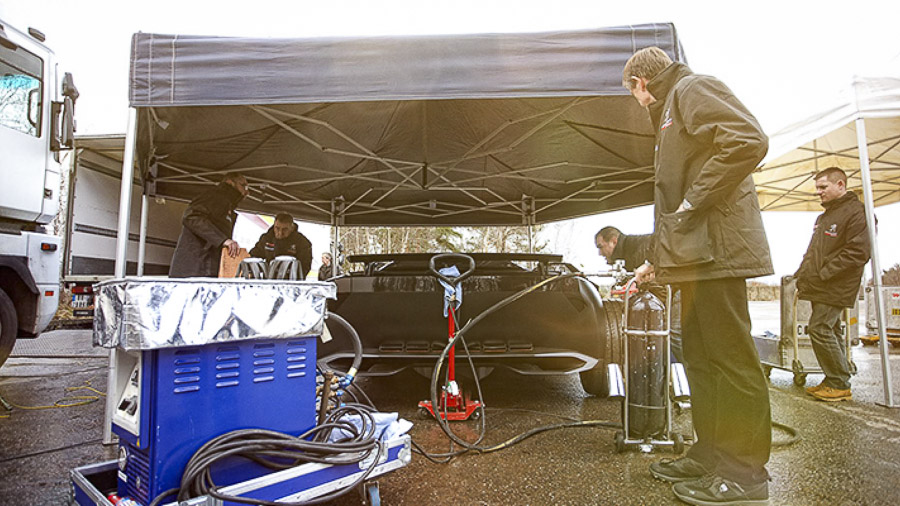
Seatbelts on, and it’s time for an engineer and I to perform the two-man job of firing the Onyx up. The car begins to make sense now, sat here in the cockpit and performing the start procedure. Finally, there is a little bit of familiarity to contrast with the otherworldly materials - nothing major, but at least we’ve got three pedals, and seatbelts.
Dip the heavy clutch, and push the start button on the wheel. The Onyx starts to turn over. Wait for the engineer to turn the ignition on. It fires, but not smoothly. There’s no instant catch, and the diesel sounds rough and rattly at idle, as if it’s itching to get going. These are racing-car character flaws, which, weirdly, bode well.
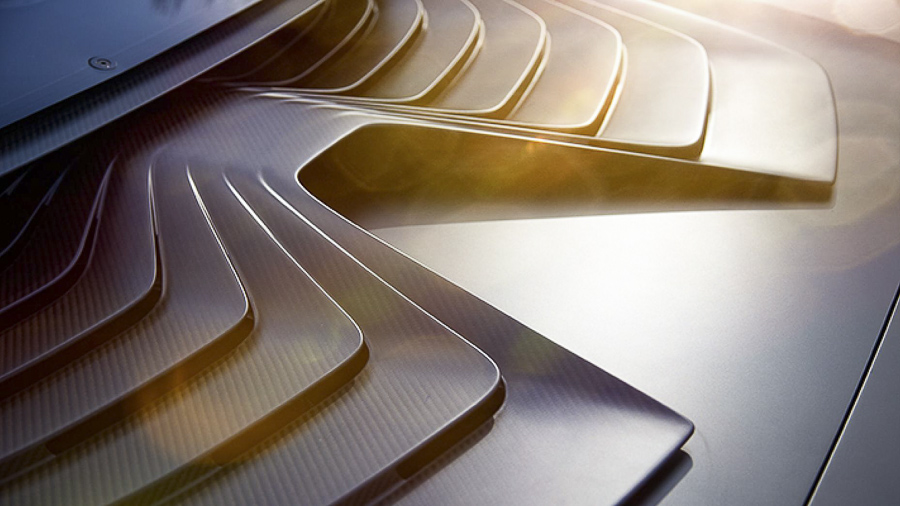
Then pull right-hand paddle to engage first gear. Clack. Hear the gearbox engage the first cog. Build revs. Keep building. Ease the clutch out… steady. Ka-donk. Stalled. Whoops. Embarrassing. Useless-driver character flaw – doesn’t bode well. Hit the neutral button. Start again. More revs this time, slip the clutch more. The Onyx starts to move – admittedly with appalling kangaroo bounce, but at least we’re going forwards.
And that really is the scariest part of the Onyx. Once you’re rolling, everything syncs up, and you have to keep telling yourself that this is a concept car. Sure, it feels a bit pre-production in places, but certainly no worse than any other development car I’ve ever driven. Once it’s running at 3,000rpm and above, the engine smoothes out, and we easily manage to hit 70mph. It doesn’t feel 545bhp per tonne fast, but then I’m not driving it in full red-mist mode. The knowledge of all the upcoming motor shows puts a stop to that.

It does feel quick, and far more reactive than you’d expect a diesel to be. The throttle response is silky, and the turbo doesn’t take an age to spool up, meaning that it’s – steady now – pretty easy to drive.
Two things stand out more than most: the gearbox and the ride. The sequential gearbox, also from the 908, is a proper bit of kit, and because this crucial touch point is so sorted, it makes the Onyx feel far more resolved than it probably should. Upchanges are fast and hard, but it’s the downshifts that really impress. There’s no need to use the clutch, and it clacks into the lower gear with a real sense of urgency and ferocity. Makes you wonder how epic the Onyx would feel barrelling down the Mulsanne…
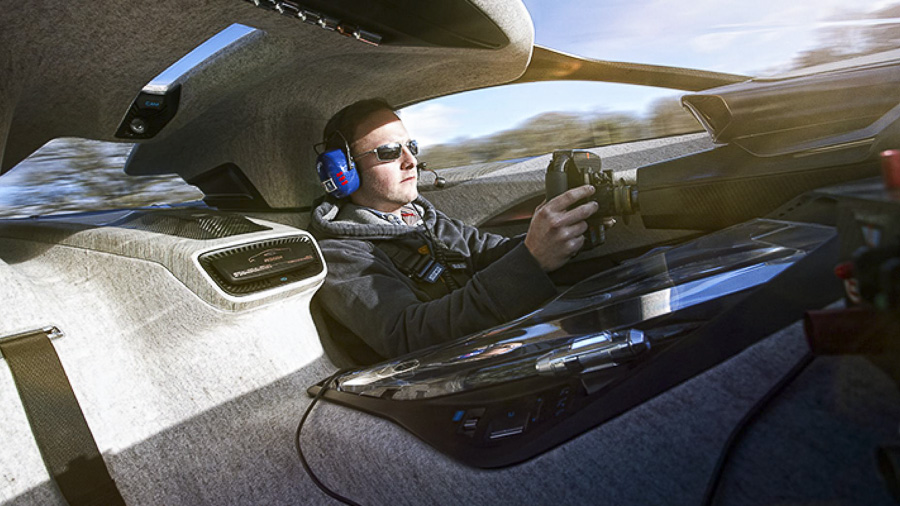
And the ride surprises. I know French cars have historically been wafty things, but come on: have you seen the size of the wheels and tyres on the Onyx? It looks like it should have the ride comfort of a large rock but doesn’t. It flows over the road, absorbing the bumps but not isolating them entirely, so you still have a sense of what’s going on underneath. It all feels like someone has put time and effort into making the Onyx actually work, as well as look good.
The Peugeot guys tell me they’re off to Nogaro in a couple of weeks to try to set a lap time around the circuit. I’m not surprised. Other than some very heavy steering and a tendency to dive to the left under braking, it doesn’t feel like the Onyx is a million miles away from where it needs to be to set a properly speedy lap time.
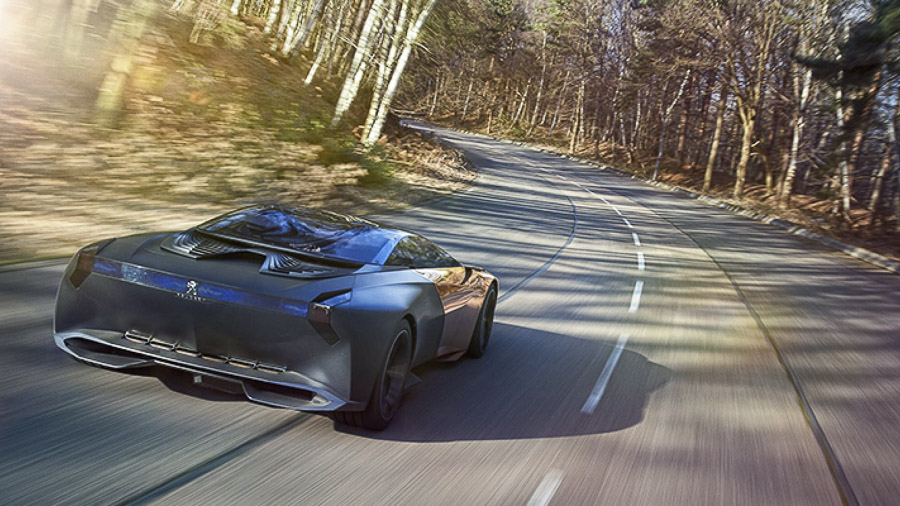
But despite all this, it’s still difficult to know what actual conclusions to draw. It’s a confusing car. On the one hand, it makes all the right ticking noises as it cools on the tarmac, but, equally, it’s obvious that the Onyx will only ever be a concept. But maybe that doesn’t matter. Maybe, for once, it’s OK for us not to be locked in reality. Because ultimately, the Onyx helps to prove that Peugeot is thinking big and building some confidence. You’ll probably already have read elsewhere in this issue how good the 208 GTi is, but a viable carmaker needs to build good cars across the range, halo concepts included. The Onyx might not be overly realistic, but it is exciting. It’s the right kind of confident concept: it looks cool, and it goes brilliantly. And that’s what Peugeot needs – reality and aspiration. Now all it has to do is translate the Onyx attitude into its road cars.
{gallery}Peugeot-Onyx-Concept-FEAT-Drive{/gallery}
